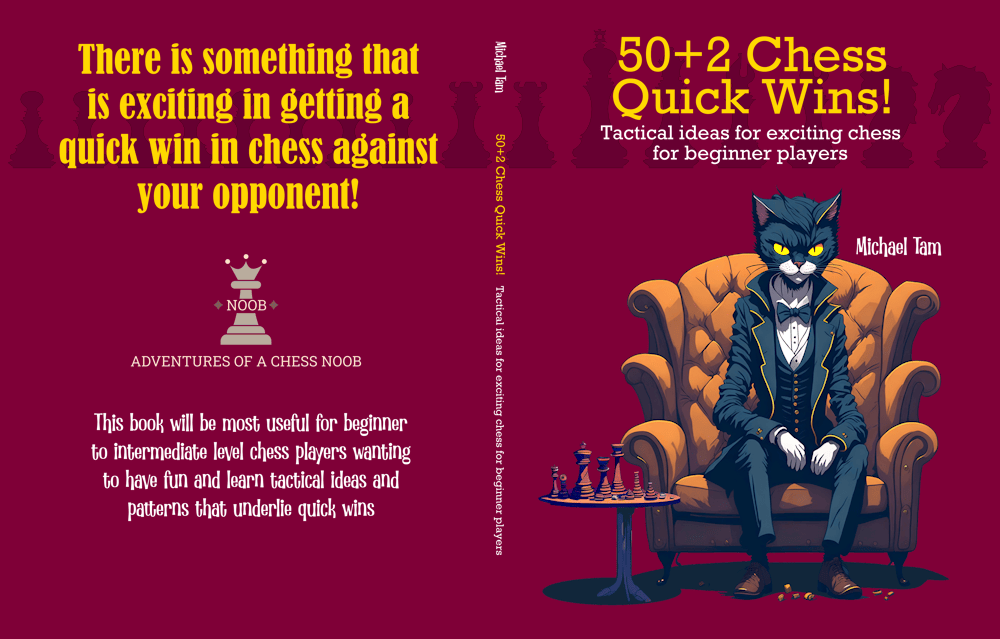
Giraffe Attack | Double Brilliant Vienna Game! ⚡ Quick Wins #105
#vienna #giraffeattack #brilliant #quickwins

![]()
Welcome to another Quick Wins and today, we have a double brilliancy in one of my favourite lines in the Vienna Game, the Giraffe Attack!! 🦒🤪👍‼️‼️

![]()
It had been some time since I last played down this line, and I was great reminding myself of its giraffey goodness. For those who aren’t familiar, I’ve a playlist on my YouTube channel with over 20 videos!

![]()
I also wrote the “Complete Guide to the Giraffe Attack in the Vienna Game!🦒♟️” a year-and-a-half ago if you want a detailed primer on the opening!

![]()
* * *
![]()
Firstly, the Giraffe Attack is a somewhat unsound, but very effective move that immediately undermines the Anderssen Defense (2… Bc5) to the Vienna Game. This flexible response to the Vienna was played by and named after Adolf Anderssen (1818-1879). Anderssen was an immensely strong chess player, and was considered the world’s best active player from 1851 (after winning the first international chess tournament in London) until 1866, where he lost to the ascendant and future first World Chess Champion, Wilhelm Steinitz (1836-1990). Anderssen did lose decisively to Morphy in 1858 during his tour of Europe, but Morphy essentially retired from chess soon after on his return to the US.
![]()
Download all of Anderssen’s games (PGN)
where he played the Anderssen Defense! 🤩👍
![]()
I find it fascinating to discover the tactical insights of chess masters from ages past, in light of modern data. When we look at the Lichess community database, the Anderssen Defense is empirically the best response by Black in terms of win-loss likelihood, even if it isn’t the most accurate.
However, White can turn things around with one of two relatively inaccurate moves of their own; the Vienna Gambit like (3. f4), or the featured line of this article, the fabulous Giraffe Attack (3. Qg4!?). The advantage of the Giraffe Attack is that it is almost never seen (less than 1% of responses to the Anderssen Defense), it is one of the most winning responses (White wins 53% vs Black wins 44%), with there being some simple attacking ideas for White.
The premise is that the queen on g4 immediately pressures Black’s hanging g7-pawn, punishing Black’s early movement of their dark square bishop. In this game, Black played the second most common response to address the g-pawn problem by pushing it forward (3… g6?!). This makes sense in a very direct way, but it’s a strategic mistake. Notice that Black has created dark square weaknesses on their kingside!
With White, we can immediately exploit this with (4. Qg3), threatening Qxe5+ which is a triple fork! Black defended their e-pawn with (4… d6); logical. However, the thing to know is that the weakness remains, and the attack is so strong, we can afford sacrificing a knight. And so, (5. Nf3) with the intention of Nxe5!
Black decided to play a bold move (5… f5?!) and sought to double down and take space on the kingside. However, this doesn’t address the dark square weaknesses and so the first brilliancy (6. Nxe5!!). Black realised that they couldn’t safely capture the knight back with (dxe5) and so played another logical move (6… Qe7?) to add a second attacker. However, this compounds the mistake as we have another brilliant move (7. Nxd5!!) – this pressures Black’s queen on e7 and the c7-pawn!
This forces a queen trade (7… Qxe5 8. Qxe5 dxe5) and then the winning strike (9. Nxc7+! Kd8 10. Nxa8), and I emerge from the opening salvo having won Black’s rook! Technically, this is a rook-knight trade, as the knight on a8 is relatively trapped and Black could capture it if they are careful. On the other hand, the approach for White is now quite simple: consolidate, develop, castle the king to safety, and if Black permits it, attempt to rescue the knight, but to not prioritise this.
In this game, Black opted to delay developing their queenside pieces aiming instead for an attempt for an attack. However, this approach was premature, wasn’t difficult to deflect, and left them susceptible to a counterattack on their king in the centre files. On turn 16, Black played (16… Ke6), and in doing so, abandoned the defence of the c7 square. My knight, chillaxing on a8, leapt at the opportunity with (17. Nc7+!?). This wasn’t the most accurate move, but it struck with a psychological blow – the knight had escaped its detention! Black lost the will to play on and resigned, defeated. Good game, GG!
![]()
* * *
![]()
Learn how to play the best chess opening attacks in the Romantic style with my new book, “Become a Chess Assassin!”.




